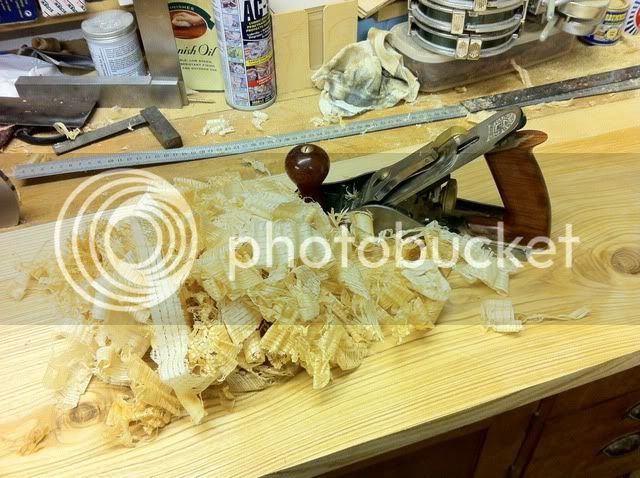Aled Dafis
Established Member
Reading Rob's thread on his one plank Krenovian inspired wall cabinet reminded me that I'd done a similar thing last autumn when building a coffee table. So here goes a retrospective WIP of sorts, unfortunately I didn't take enough pics of the process. I can't remember where I acquired the wood, but I remember thinking that I'd never used Elm before so I would give it a go to see what I could make of it.
Firstly I started with a single plank of Elm 1600 x 420 x 75mm, it doesn't look too bad in the pic, but trust me there were quite a few knots and shakes, not to mention the dreaded woodworm :evil:
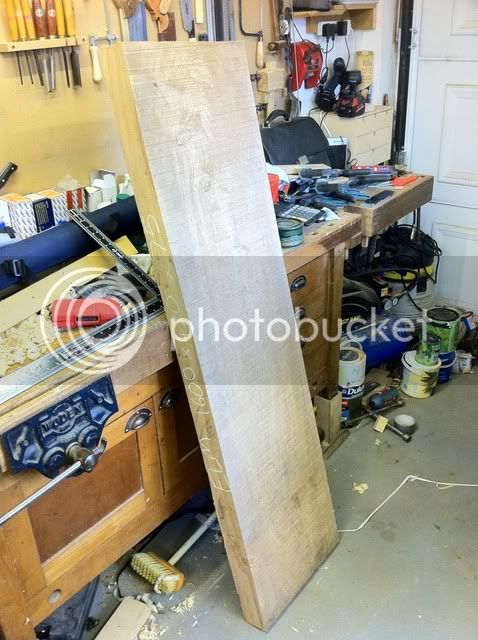
So I roughed out what I could manage, bearing in mind that this was all the Elm I had, so all parts must come from this one plank. I resawed the 3" plank in half to get the 1"+ boards for the tabletop.
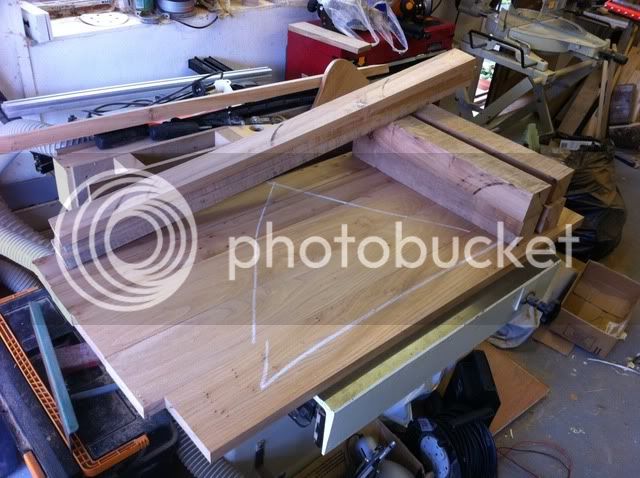
Then cut the tapered legs on the tablesaw using my cobbled together jig (I know that the crown guard should be fitted but I had to remove it to achieve the 3" cut)
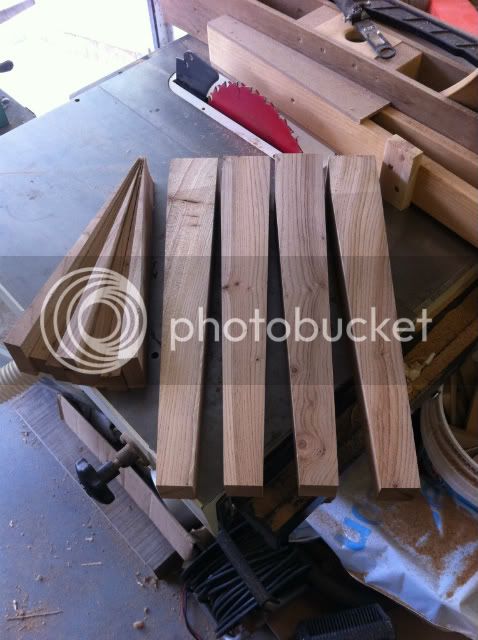
Fast forward a few weeks - this is where I got too carried away with the making/finishing to take photos - and here we have a completed coffee table - the finished dimensions are about 1m x 500 x 500mm, dictated solely by the wood available and cutting out the worm holes and checks.

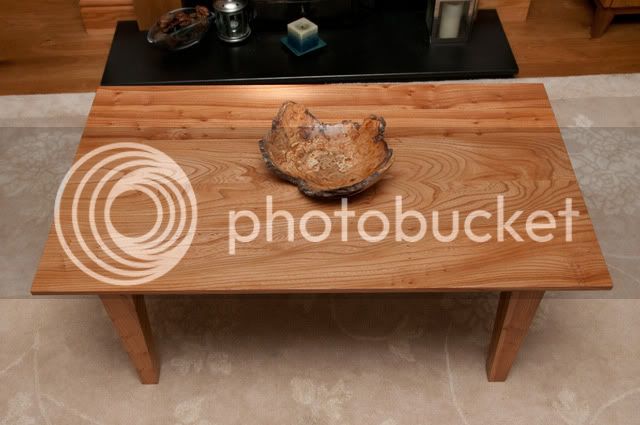
The frame was Dominoed together, and the whole table was finished with three coats of Woodoc 10 Polywax finish having filled the grain first with some standard filler (oak colour) that I had in the cupboard.
Cheers
Aled
Firstly I started with a single plank of Elm 1600 x 420 x 75mm, it doesn't look too bad in the pic, but trust me there were quite a few knots and shakes, not to mention the dreaded woodworm :evil:

So I roughed out what I could manage, bearing in mind that this was all the Elm I had, so all parts must come from this one plank. I resawed the 3" plank in half to get the 1"+ boards for the tabletop.

Then cut the tapered legs on the tablesaw using my cobbled together jig (I know that the crown guard should be fitted but I had to remove it to achieve the 3" cut)

Fast forward a few weeks - this is where I got too carried away with the making/finishing to take photos - and here we have a completed coffee table - the finished dimensions are about 1m x 500 x 500mm, dictated solely by the wood available and cutting out the worm holes and checks.


The frame was Dominoed together, and the whole table was finished with three coats of Woodoc 10 Polywax finish having filled the grain first with some standard filler (oak colour) that I had in the cupboard.
Cheers
Aled

































